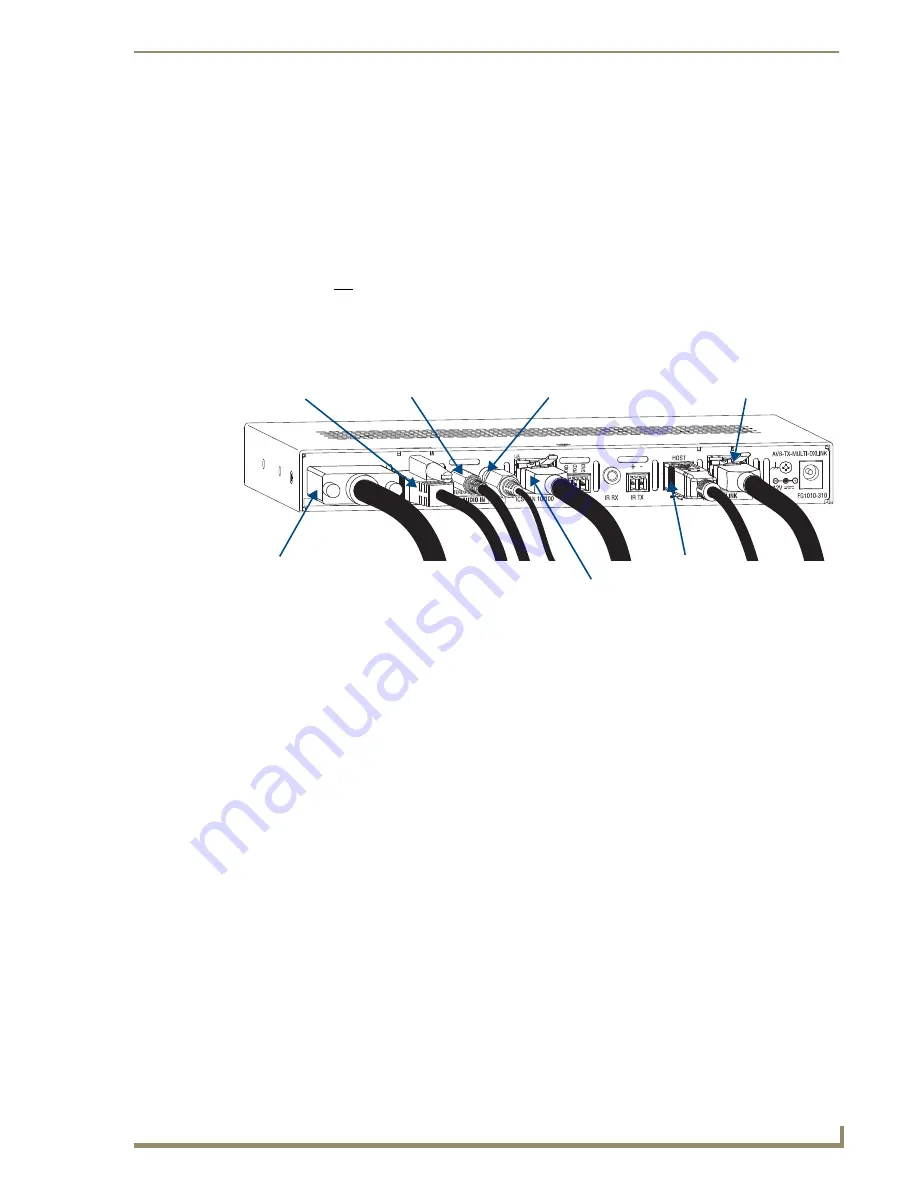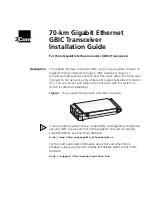
Installation and Setup
53
Instruction Manual – DXLink™ Twisted Pair Transmitters/Receiver
Important:
If the indicator LEDs for the Wallplate TX or Decor Wallplate TX do not respond with a
normal display as stated in the table above, check all of the connections and the suggestions in the
“Troubleshooting” chapter (see page 101) before contacting technical support (see page 104).
Multi-Format TX or HDMI TX – Attaching Signal, Transport,
and Control Cables
Important:
Before attaching cables, be sure to set the DIP switch’s toggles if necessary (see
page 41).
Important:
Do not use the RJ-45 connector labeled “DXLink” for connecting to a standard Ethernet
Network.
Note:
Power, IR, and RS-232 ports are covered in their own sections.
To attach signal, transport, and control cables to Multi-Format TX or HDMI TX:
1. Multi-Format TX only
– Attach the HD-15 cable from the source device to the Video In connector
(for pinouts for VGA, component, S-Video, and composite, see page 128).
2.
HDMI In connector – Attach the HDMI cable from the source device to the HDMI In connector.*
3.
DXLink connector – Attach a twisted pair cable to the DXLink connector for UTP transport to the
switcher (or HDMI RX).
4.
Stereo Audio In jack (optional) – Plug in the analog audio cable from the stereo audio source into
the Stereo Audio In jack. For audio precedence information, see page 50.
5.
Digital Audio In jack (optional) – Insert the S/PDIF (RCA) plug on the digital audio cable from the
digital audio source into the Digital Audio In jack. For audio precedence information, see page 50.
6.
ICS LAN 10/100 connector (optional) – Attach a twisted pair cable from this connector to a LAN.
7.
If necessary, set the video and audio formats using commands (for NetLinx programming
information, see page 79).
8.
USB port (optional) – The USB port will be supported in a future firmware upgrade.
* DVI cable can be used instead (via a DVI-to-HDMI cable adapter); however, the advanced audio
support from HDMI will not be available.
Note:
The ID Pushbutton places the module in ID Mode for setting the NetLinx ID (device only)
and provides additional functionality, such as placing the device in Static IP Mode or DHCP Mode.
For complete information, see page 66.
FIG. 31
Attach signal and control cables (Multi-Format TX shown)
HDMI In connector
Stereo Audio In jack
USB port
ICS LAN 10/100 connector
Digital Audio In jack
Video In connector
DXLink output connector
Содержание AVB-DWP-TX-MULTI-DXLINK
Страница 6: ...Contents iv Instruction Manual DXLink Twisted Pair Transmitters Receiver ...
Страница 12: ...Notices 6 Instruction Manual DXLink Twisted Pair Transmitters Receiver ...
Страница 38: ...Product Overview and Specifications 32 Instruction Manual DXLink Twisted Pair Transmitters Receiver ...
Страница 78: ...Network Configuration 72 Instruction Manual DXLink Twisted Pair Transmitters Receiver ...
Страница 116: ...Appendix A Upgrading the Firmware 110 Instruction Manual DXLink Twisted Pair Transmitters Receiver ...
Страница 136: ...Appendix D Cable Details and Pinout Info 130 Instruction Manual DXLink Twisted Pair Transmitters Receiver ...
Страница 140: ...Appendix E Supported Input Resolutions 134 Instruction Manual DXLink Twisted Pair Transmitters Receiver ...
Страница 146: ...Appendix F Supported Output Resolutions 140 Instruction Manual DXLink Twisted Pair Transmitters Receiver ...
















































